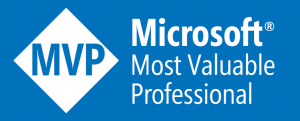Why Every Business Leader Should Read ‘The Goal’
Back in 1991–92, I was working for a small tech company near Sacramento, California, when I was introduced to The Goal by the late Eliyahu Goldratt. The company’s founder kept a list of recommended management books and offered employees $20–$50 to read one and share key takeaways during our weekly operations meetings. Several of those books became personal favorites, but The Goal always stood out.
 If you’ve ever run a business, managed a team, or tried to improve a process, chances are you’ve bumped into inefficiencies that feel impossible to fix. Things slow down, work piles up, deadlines slip, and no matter how hard everyone pushes, the results just don’t improve. You’re not alone. This is exactly the kind of chaos The Goal zeroes in on — and it does it in a way few business books dare: through a story.
If you’ve ever run a business, managed a team, or tried to improve a process, chances are you’ve bumped into inefficiencies that feel impossible to fix. Things slow down, work piles up, deadlines slip, and no matter how hard everyone pushes, the results just don’t improve. You’re not alone. This is exactly the kind of chaos The Goal zeroes in on — and it does it in a way few business books dare: through a story.
Since its release in 1984, The Goal has become one of the most recommended business books of all time — not because it’s packed with buzzwords or lofty theories, but because it teaches something deeply practical: how to identify the one constraint holding your organization back, and how to unlock progress by addressing it directly.
At the heart of The Goal is the Theory of Constraints (TOC), a framework that’s as relevant today as ever — possibly more so, given the speed, complexity, and interdependence of modern business.
What Makes The Goal Different?
Goldratt didn’t write a textbook. He wrote a novel. It follows Alex Rogo, a plant manager (and Boy Scout leader) whose factory is failing. Orders are late, costs are up, and his job’s on the line. His marriage is falling apart. Then, with the help of a mysterious mentor named Jonah (a stand-in for Goldratt himself), Alex starts to see the hidden constraint that’s bottlenecking everything. And once he tackles it, everything changes.
That’s the power of TOC: it cuts through noise.
Instead of treating every problem with a generic fix (like “work harder,” “hire more people,” or “cut costs”), TOC forces you to pinpoint the exact process step that’s limiting your output — the constraint — and align everything around maximizing its performance. It’s focused. Measurable. Actionable. And it works.
Why Business People Still Need This
Business has changed since 1984. We’ve moved from manufacturing to knowledge work, from local supply chains to global ones, from internal systems to SaaS and APIs. But complexity has only made TOC more essential.
Too many leaders today are stuck in a reactive loop, chasing symptoms instead of solving root problems. They’re over-investing in areas that aren’t constraints, while ignoring the true bottlenecks holding them back.
TOC reminds us: A system’s performance is determined by its weakest link. Improve that, and you move the needle. Improve anything else, and you’re just adding noise.
That mindset shift — from optimizing everything to focusing on the constraint — is game-changing.
Modern Business, Same Bottlenecks
In the era of Power Platform and AI, we’re constantly looking at ways to automate everything. But it automation always the right answer?
Let’s say you run a SaaS company. Sales is crushing quota, but customer onboarding is slow. Support tickets are piling up, and churn is creeping higher. The instinct might be to add more customer success reps or automate support. But what if the real constraint is in onboarding design? What if customers don’t know how to use the product, so they never stick around long enough to get value? Is automation the answer, or education, or possibly a simpler design?
TOC says: find the constraint, fix it, then re-evaluate.
Or take a startup. Maybe marketing’s generating leads, but product can’t ship updates fast enough to meet demand. Hiring more engineers won’t help if your deployment process is broken. The bottleneck isn’t headcount — it’s the pipeline.
This is why The Goal still resonates. It gives you a mental model that transcends industry. Whether you’re in logistics, tech, healthcare, or education, TOC applies. It teaches systems thinking in a way that’s not abstract — it’s visceral.
TOC in 5 Steps
Goldratt lays out a clear process for applying TOC:
-
Identify the system’s constraint. What’s the one thing that’s limiting output?
-
Exploit the constraint. Make sure it’s being used as effectively as possible.
-
Subordinate everything else. Align all other processes to support the constraint.
-
Elevate the constraint. Add capacity, resources, or redesign it to break the bottleneck.
-
Repeat. Once a constraint is broken, a new one appears. Go back to step 1.
This isn’t theory for theory’s sake: it’s a loop for continuous improvement. And it sidesteps the trap of trying to do everything at once, which is how so many businesses stall out.
Why The Goal Works Where Other Books Don’t
Most business books suffer from one of two problems: they’re too fluffy, or they’re too rigid. They either offer generic motivation without strategy, or they lay out a model with no flexibility.
The Goal strikes a rare balance. It tells a human story that makes the ideas stick, but the lessons are immediately practical. You don’t just learn TOC — you see it in action, in a messy, relatable business environment.
That’s why so many CEOs, consultants, and operations leaders list The Goal among their top reads. It stays with you. It changes how you look at problems.
It’s Not Just a Factory Problem
There’s a misconception that TOC is only for manufacturing. That’s outdated. The principles translate seamlessly to digital workflows, service delivery, project management, and even personal productivity.
In fact, you can use TOC to:
-
Fix project delays by identifying the task holding everything up.
-
Improve team performance by focusing on the skill gap or tool limitation slowing progress.
-
Streamline operations by removing process steps that don’t serve the constraint.
It’s a versatile lens, and most businesses today need sharper lenses, not more spreadsheets.
Read It, Apply It, Repeat
If you lead a team, run a business, or are trying to scale any kind of operation, The Goal should be on your shelf. Not just to say you read it, but to use it. TOC is one of those rare frameworks that gives you leverage — real, practical leverage — over complex systems.
And in a world where every business is a system of moving parts, that’s not optional. It’s essential.
So yes, more business people need to read The Goal. Not only because it’s a classic, but because it works. The sooner you start seeing constraints, the sooner you start seeing results.




